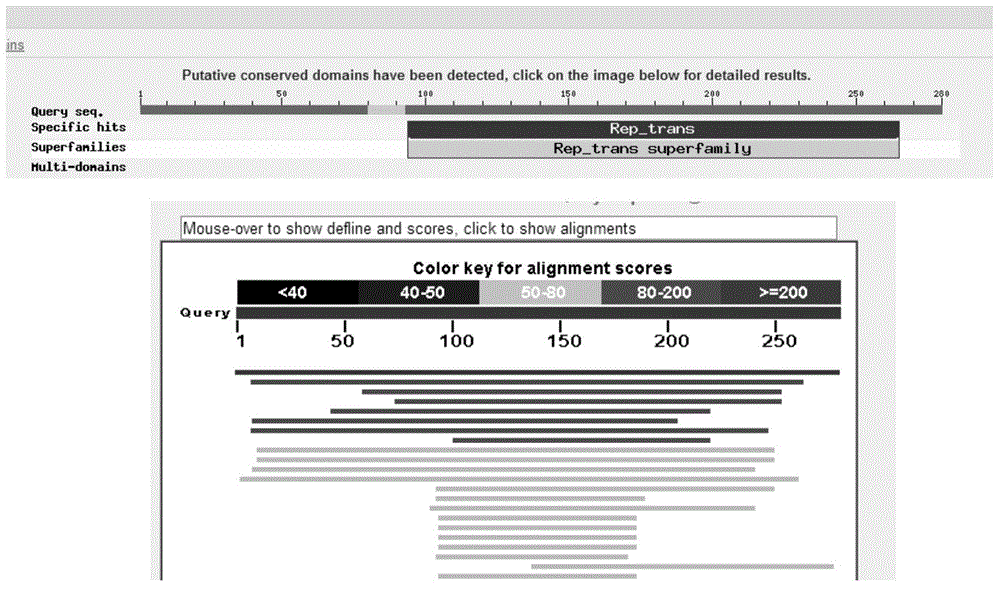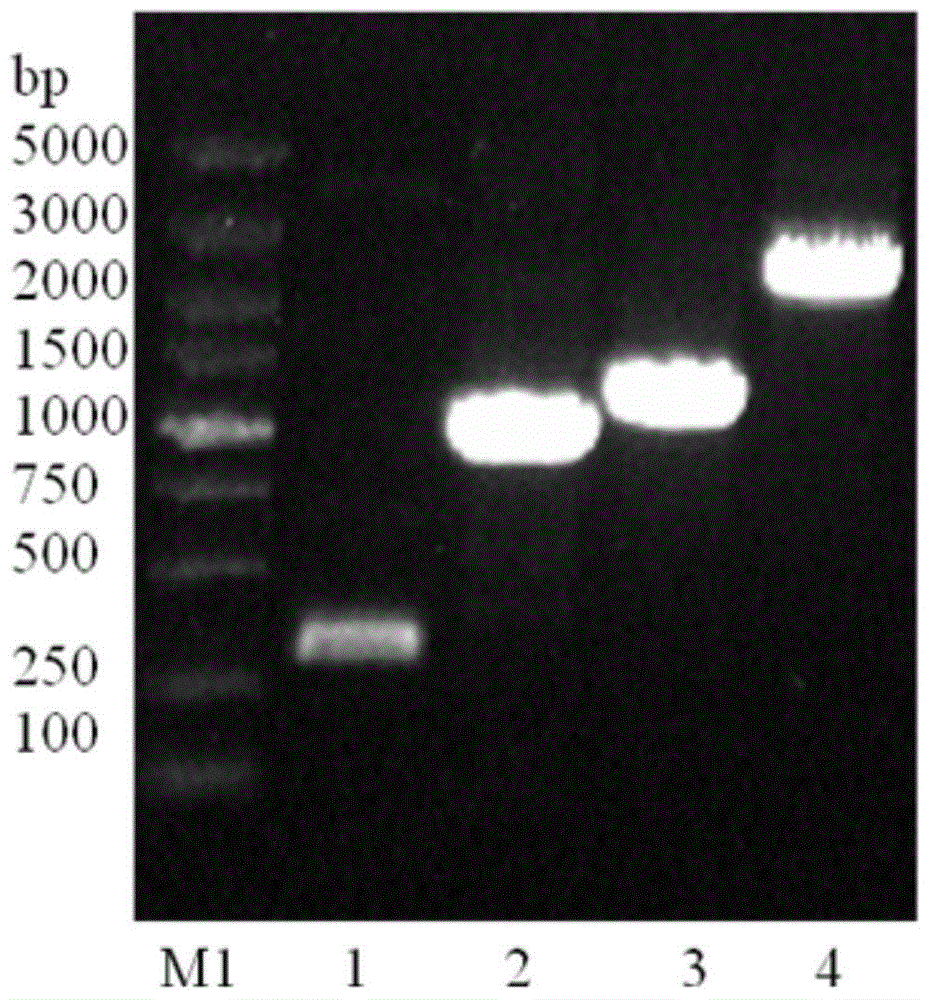Arthrobacter sp. expression plasmid and application thereof
A technology for expressing plasmids and Arthrobacter, which is applied in the fields of molecular biology and bioengineering
- Summary
- Abstract
- Description
- Claims
- Application Information
AI Technical Summary
Problems solved by technology
Method used
Image
Examples
Embodiment 1
[0031] Example 1: Acquisition of Arthrobacter replicon.
[0032] By searching the natural plasmid of Arthrobacter in GenBank, it was found that the pA3 plasmid (GenBank accession number is AJ131246.1) has a full length of 2205bp and contains 5 ORFs (such as figure 1 shown) the full sequence. In order to study the replicon of this plasmid, the gene sequence of pA3 plasmid was synthesized by Suzhou Jinweizhi Biotechnology Co., Ltd. for whole gene synthesis.
[0033] The size of pA3 is 2205bp, its nucleotide sequence is shown in SEQ ID NO: 2, the G+C content is 59.86%, and it contains 5 ORFs, each of which is ORF. The amino acid sequences encoded by the 5 ORFs marked in GenBank were BLASTed in NCBI, and the comparison results are shown in Table 1. The results showed that the ORF1 amino acid sequence had 30% similarity to the replication initiation factor of Propionibacterium acnes (see figure 2 ) shows that ORF1 is most likely the replication initiation factor of pA3, but the ...
Embodiment 2
[0049] Example 2: Construction and functional verification of the novel Arthrobacter plasmid pUAKP.
[0050] The P13-3 promoter (the sequence shown in 152-261 in SEQ ID NO: 1, which was screened by our laboratory) was cloned into the BamHI site of the pUAK4 plasmid ( Figure 7 ), to get the pUAKP plasmid ( Figure 8 ).
[0051] The gfp gene (green fluorescent protein) was inserted into the multiple cloning site of the pUAKP plasmid to obtain the pUAKP-gfp plasmid ( Figure 9 ), using the pARK-gfp (pARK plasmid with gfp gene connected at the multiple cloning site) plasmid as a control, use a fluorescence microscope to observe the fluorescence intensity of each bacterial strain under the same exposure time, as shown in Figure 10 As shown, middle A, B, and C are Arthrobacter empty bacteria respectively (the Arthrobacter used in the present invention is CGMCC3584, and the specific information of this strain has been disclosed in detail in the Chinese patent whose application nu...
Embodiment 3
[0052] Example 3: Application of pUAKP plasmid.
[0053] The hypoxanthine phosphoribosyltransferase gene (abbreviated as hgprt gene, the sequence of which has been disclosed in 201310248615.1) is cloned into the multiple cloning site of pARK (the nucleotide sequence of the plasmid has been disclosed in 201510186254.1) plasmid and pUAKP plasmid, The pARK-hgprt plasmid and the pUAKP-hgprt plasmid were respectively obtained. The above two plasmids were transformed into Arthrobacter CGMCC 3584 respectively, and the obtained strains were named pAK-Arth and pUK-Arth respectively, and cAMP was produced by fermentation as follows:
[0054] 1. Strain activation: three strains of Arthrobacter CGMCC 3584, pAK-Arth, and pUK-Arth were respectively cultured on Arthrobacter solid medium (glucose 10g / L, peptone 10g / L, yeast extract 10g / L, beef extract 10g / L, Agar 20g / L pH7.2, 121 ℃ high pressure steam sterilization 15min) on the streak activation 36h.
[0055] 2. Seed liquid: pick single co...
PUM
 Login to View More
Login to View More Abstract
Description
Claims
Application Information
 Login to View More
Login to View More - R&D
- Intellectual Property
- Life Sciences
- Materials
- Tech Scout
- Unparalleled Data Quality
- Higher Quality Content
- 60% Fewer Hallucinations
Browse by: Latest US Patents, China's latest patents, Technical Efficacy Thesaurus, Application Domain, Technology Topic, Popular Technical Reports.
© 2025 PatSnap. All rights reserved.Legal|Privacy policy|Modern Slavery Act Transparency Statement|Sitemap|About US| Contact US: help@patsnap.com



